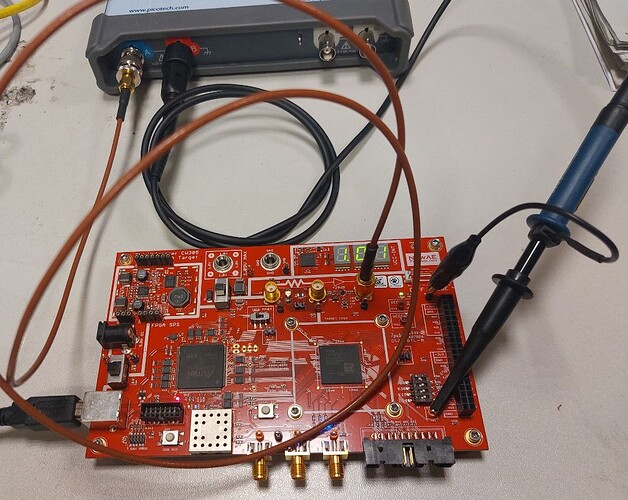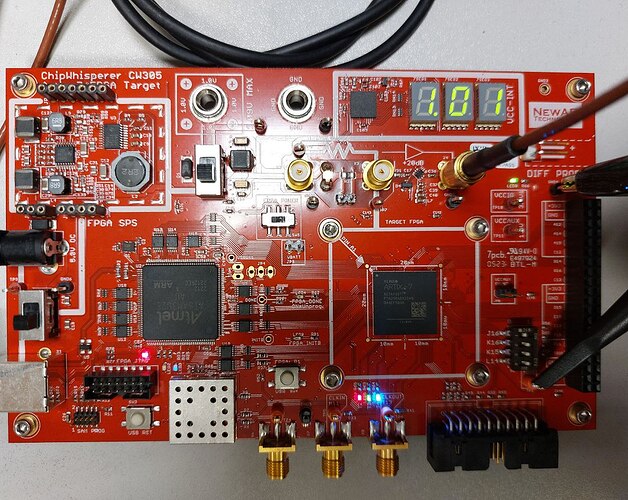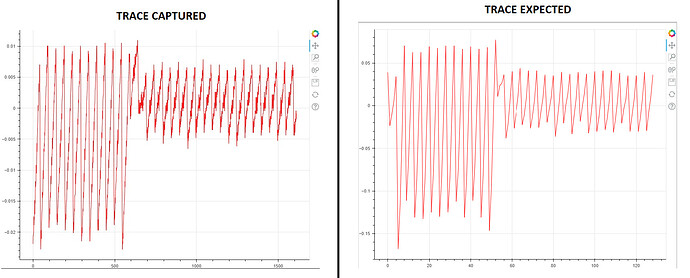Hi all,
I have the CW305 target board and I’m using the PicoScope to run the attack Breaking Hardware AES on CW305 FPGA.
The jupyter notebook of my test can be found here SCA_test_jupyter/mattia_sca at master · mattiamirigaldi/SCA_test_jupyter · GitHub
There’s also an HTML file with the results of the attack.
I’m using the PicoScope 5000a series ( model: 5244D ).
One probe of the PicoScope is connected to the SMA X5 connector and it is AC coupled.
The other probe is connected to TP1 for the trigger, it is DC coupled and I’m using a threshold of 2 V (rising edge).
I’m using the pico-python library (GitHub - colinoflynn/pico-python: PicoScope Python Interface).
I have two major problems that I’m not able to fix.
1. The encrypted plaintext read from the FPGA is wrong
The target object of the CW305 is instantiated with the command
target = cw.target(None, cw.targets.CW305, fpga_id='100t', force = True)
So I’m expecting that the FPGA is programmed with the bitstream of the AES-128 HW implementation.
The plaintext to the FPGA is written with the function
target.fpga_write(target.REG_CRYPT_TEXTIN, text)
The trigger of the encryption is done by calling functions
target.fpga_write(target.REG_USER_LED, [0x01])
target.usb_trigger_toggle()
Once the trace has been captured the encrypted value is read with the function
response = target.fpga_read(target.REG_CRYPT_CIPHEROUT, 16)
To check if the read encrypted value is correct I compared to the expected one using the AES cipher.
cipher = AES.new(bytes(key), AES.MODE_ECB)
cipher.encrypt(bytes(text)
But the assertion between expected ciphertext and read one fails.
2. Trace captured are attenuated by an order of magnitude
The plot of the power trace has a pattern similar to that expected, but the voltage values captured are more or less attenuated by an order of magnitude.
I do not know why, as the probe does not perform attenuation. Does the SMA X5 connector automatically attenuate by 10?
I’ve tried the sbox_output attack, but it fails. I think it has to do with the wrong output result from the AES HW implementation.
But it may also be due to an error in how I create the Trace object.
In summary, why am I reading the wrong ciphertext, and why the traces are attenuated?
Thanks in advance for the support



